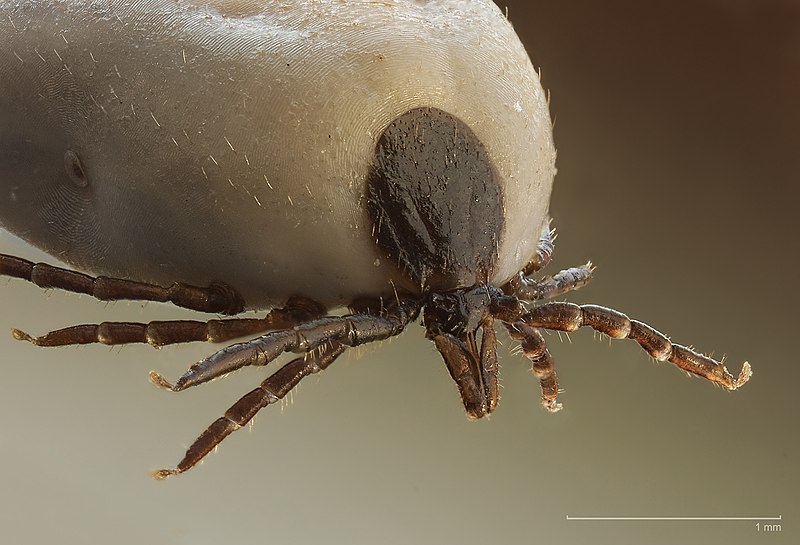A innocent female moose, about to be attacked by an onset of terrible parasite in Northeast Canada.
Winter Ticks, not containing Lyme Disease or other Human-harming diseases, are rising exponentially in population throughout New England and Canada, all due to increasingly warmer and snow-free springs and later winters everywhere. As a result, an unlikely species in this region is being targeted by these tick epizootics, Moose, because ticks search for hosts in the fall and other warmer temperatures and stop once freezing weather and snow befalls the land. Yet, when these conditions occur much later, it gives these ticks more time to feast on peaceful animals, and also giving more time for female ticks to fall off its host and create tons more larvae, not making this issue any better. As these raisin sized parasites latch onto to these large creatures, draining so much blood at a time that they simply are unable to function anymore and weakly fall, succumbing to the environment, other predators, or even more ticks. But it’s not simply a few ticks, no, these moose can carry up to around 90,000 ticks! Because of this, there has been “an unprecedented 70 percent death rate of calves over a three-year period” according to a similar source from the University of New Hampshire. Plus, this problem has gotten so bad that now a threatened species in this region of British Columbia, the boreal Caribou, are being eaten alive as well!” If blood loss from heavy tick loads does not directly kill animals, it can make them susceptible to other health risks, Schwantje adds in the original source. “They have spent so much time scratching and chewing on themselves that they haven’t been feeding, so they are in poor body condition,” she says, even with tremendous hair loss that they become basically unrecognizable.
An example of one of these detrimental winter ticks, a female engorged in size with blood and larvae, ready to reproduce .
But How Can This Be Stopped?
Currently, researchers are offering a multitude of solutions to help save these wonderful species from these terrifying parasites, as Swantje says that “They have huge cultural and nutritional value to our First Nations, And when moose forage in wetlands, they help release nutrients into the environment and make them available to other plants and organisms, studies have shown”, one solution can even be seen here. One possibility is to continuously treat half of the moose with anti-parasite gel and pills that make attached ticks drop from their bodies in order to isolate specifically what the ticks do and don’t do to harm these moose. The other possibility is a highly unlikely one, hunt the moose. Researcher Peter Pekins suggests that “issuing more moose-hunting permits in strategically selected areas” could essentially starve out the ticks in certain areas, yet it is argued that this would only benefit the environment short term, as the climate will continue to warm leading to the growth of more and more ticks.
Who know, if this isn’t stopped soon, ticks will continue to grow in population and maybe even take down us humans! Save the moose (and the caribou)!




Leave a Reply